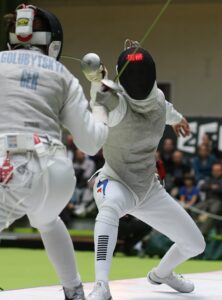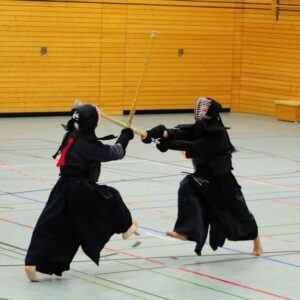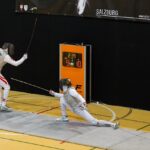Every sport has variations and some of them are likely to be the most popular out there. For example, basketball is not played on the entire court most of the time. Due to certain issues sometimes or a lack of players, most people settle for playing one on one or three versus three, but only using one half of the court. Sometimes, the three point line is rarely crossed.
There might be some competitive variants of the aforementioned sport, but for sports like fencing, there are clear differences between the three main competitive types, foil, epee and sabre. Let us discuss them in detail, as well as other popular types of fencing.
The Foil

The foil is a very light weapon, known outside the fencing world as the one which bends the most. It has a flattened tip. Foil only sees the torso as the valid target for scoring meaning that hitting anything other than the torso will stop combat and it would be registered as an off-target touch. Touching is when you make contact with an opponent’s body.
There are various grips for the foil, depending on the country of origin or the master who popularized the grip. Grips can also be customized. The foil weighs no more than 500 grams. The foil uses “right of way” as scoring, meaning the first person who made the touch gets a point.
The Epee
The epee is like the foil, but heavier, up to 775 grams. The epee is a thrusting weapon, just like the foil. The difference in the styles is huge, however, because the epee sees the entire body as a valid target. Right of way is not used here and both fencers can get points simultaneously. Epee’s hand guard is much larger, circular and frequently used in combat.
The similarities with foil are that only the tip of the blade can be used as a valid scoring part. Another difference is that the combat is not stopped when the side of the blade makes contact with the body. The epee also comes with different grips, which vary by origin or master.
The Sabre
Interestingly enough, it is not a saber, but sabre, which is a historic term, originating from French. The sabre can weigh up to 500 grams. Sabre fights use right of way as a determining factor, to see who scored first. Unlike foil or epee, sabre sees the side of the blade as well as the tip as a valid scoring area. The parts of the body that score are only the upper body, or rather, torso, but not the hands.
Other Types of Fencing and Popular Culture

Other than these three, there are no other competitive variants. One might have seen fencing in popular movies, but in most movies, fencing has anything but proper technique. Proper fencing is economical and precise, wasting no time or effort on extra movements. In movies, however, fencing can be too flashy with large movements which do nothing but put you in harm’s way.
Kendo is a type of fencing, but it is not just a competitive sport. It is also a budo, a martial art, meaning that people practice it for their own peace of mind and physical benefits. Kendo can be seen partly in some Star Wars movies. The original trilogy focuses on some aspects of fencing while later movies were more CGI with broad, “impressive” movements.
Fencing, particularly competitive fencing, has three valid styles, the foil, epee and sabre. Each of the three have different scoring rules and blade types. Other styles exist, but mostly as historic examples and hobbyist sports. Variations of fencing can be seen in movies, but with broader and flashier movements.




